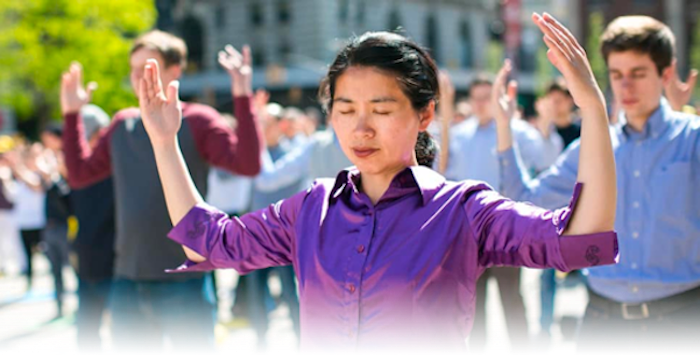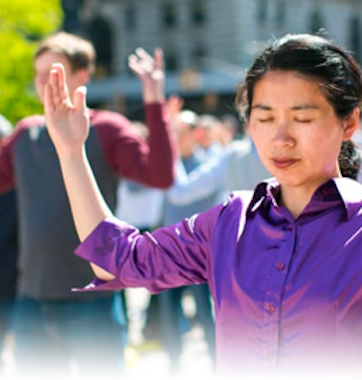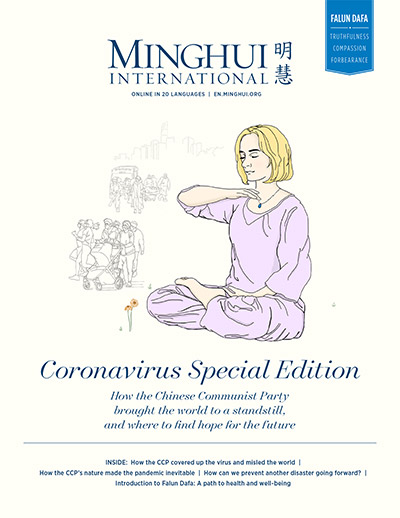(Clearwisdom.net) Does consciousness exist independently of the brain? As Falun Dafa practitioners, we have no doubts about this, but is there any evidence of the type specified by modern science that we can show our dubious acquaintances? Do people have experiences at times when their brains are clinically dead that they can remember later, so-called "near death experiences"? How often? What kinds of experiences? Can these experiences be attributed to physiological or pharmacological processes that accompany dying or to psychological responses to the threat of death or are they experiences of a reality that transcends the limitations of the flesh body?
Accounts of near death experiences (NDE's) abound in the Western literature, beginning, probably, with Plato's Republic and continuing to the present day. These accounts come from all historical periods and from many different cultures. In the past 20 years or so, this area has been the focus of increasing numbers of research reports. Several reports have focused on the experiences of children, who are presumably less likely to have been influenced by cultural factors. But all of these have been retrospective studies and the precise circumstances of the experiences could not be determined. Thus, possible correlations or the lack of such correlations with physiological states could not be reliably assessed. Until recently there had been no published prospective studies on the frequency of incidences of NDE's and of specific subjective experiences and correlating these with objective physiological measurements.
Recently, a small group of British physician-scientists, led by Peter Fenwick and Sam Parnia, have published a pilot prospective study to assess the frequency and possible causes of NDE's in survivors of cardiac arrest (S. Parnia et al., Resuscitation 48 [2001]: 149-156). Cardiac arrest survivors were good models for this type of study because they were all resuscitated using a standard procedure and thus all received the same drugs and treatments. These patients all exhibited at least two of the three criteria for pronouncing a person dead: they had no cardiac output and no spontaneous respiration. In the clinical setting, most of these patients also developed the third characteristic, fixed dilated pupils, as a result of loss of brainstem activity. Extensive physiological and pharmacological measurements were recorded for all of these patients in the course of their stay in the hospital. Over the course of a year, all cardiac arrest survivors at Southampton General Hospital were identified and interviewed during their stay in the hospital, after the usual safeguards for the protection of research subjects and the integrity of the study had been carried out. The patients were asked an open-ended question about whether they had any memories about the time when they were unconscious. The experiences of those who reported any memories at all were assessed according to the Greyson standardized scale and divided into the NDE study group and the non-NDE control group.
Of the 63 cardiac arrest survivors interviewed, 56 (88.8%) had no memory of their period of unconsciousness. Seven had at least some memory and, of these, four (6.3%) had experiences that met the Greyson criteria for near death experiences. Of the three who did not satisfy the criteria, two reported at least one feature consistent with NDE's. Of the four patients in the NDE group, all reported coming to a point of no return. Three of the four also remembered seeing a bright light and having feelings of peace, pleasantness, and joy. Half of the four saw deceased relatives, entered a new domain, felt that time had speeded up, lost awareness of their bodies, experienced harmony, and had heightened senses. None of the patients found their experiences to be traumatic or distressing, rather they were described as pleasant. None of these patients experienced the out-of-body state.
The patient whose experiences scored highest on the Greyson scale was a male who said he was a non-practicing Catholic and a Pagan. The other three patients in the NDE group were non-practicing Church of England females. Possible physiological causative factors could not be adequately investigated in this pilot study because of the small numbers of patients in the groups. In light of the frequently advanced explanation that NDE's result from oxygen deprivation of the brain, it is interesting to note that the patients in the NDE study group actually had higher oxygen levels than the control group. The exact time when the experiences were undergone was difficult to pinpoint in this study. The data support the surprising conclusion that the NDE arise during the unconscious period, when the brain is so dysfunctional that the patient is deeply comatose and the cerebral structures usually thought necessary for subjective experience and memory are severely impaired. If the NDE arose during the period when consciousness was being lost, it would have been joined in memory with ongoing mental experiences at the beginning of the episode. None of the subjects reported that. Experiences that occur during recovery of consciousness are confusional, which these were not. These subjects had lucid memories with highly structured, narrative, easily recalled and clear features, unlike confusional hallucinations. None of the subjects reported out-of-body experiences, although they are a relatively common feature of the retrospective studies. Parnia and his coworkers had prepared to test any such reports by suspending special boards from the ceiling of the wards before the commencement of the study. These boards had special figures on the surface facing the ceilings that were not visible from below. If anyone claimed to have left his or her body and be near the ceiling he would be expected to be able to identify the markings if he had indeed been out-of-body. If the perception were psychological in origin then one would not expect the markings to be identified.
In this study Parnia and his coinvestigators provided evidence that NDE's among survivors of cardiac arrest are relatively rare and that they probably occur during periods when the brain is nonfunctional. Of the memories that do occur during this "unconscious" period, the majority have at least some features of NDE's. Clearly, a much larger prospective study, probably including multiple institutions, would have to be conducted to have enough subjects so that the psychological, the transcendent, and the physiological aspects of these experiences can be studied more adequately.
After this paper appeared, Dr Parnia told interviewers from Reuters in a July interview, he and his colleagues have found more than 3,500 people with lucid memories of experiences that apparently occurred when they were clinically dead. One patient was only 2 years old when he had a seizure-induced cardiac arrest. His parents said the boy "drew a picture of himself as if out of his body looking down at himself. It was drawn like there was a balloon stuck to him. When they asked what the balloon was he said, 'When you die you see a bright light and you are connected to a cord.'" For six months after he had been discharged from the hospital, he kept drawing that same scene.
Dr. Parnia speculated that human consciousness may work independently of the brain, using it as a mechanism to manifest the thoughts, much as a television set translates the signal that comes through the ether into pictures and sounds.
With regard to out-of-body NDE's, he said, "When these people are having experiences they say, 'I had this intense pain in my chest and suddenly I was drifting in the corner of my room and I was so happy, so comfortable. I looked down and realized I was seeing my body and doctors all around me trying to save me and I didn't want to go back.'
"The point is they are describing seeing this thing in the room, their body. Nobody ever says, 'I had this pain and the next thing I knew my soul left me.'''
Reuters article:
http://dailynews.yahoo.com/h/nm/20010629/sc/life_consciousness_dc_1.html
Reprinted from PureInsight Net
Category: Perspective








